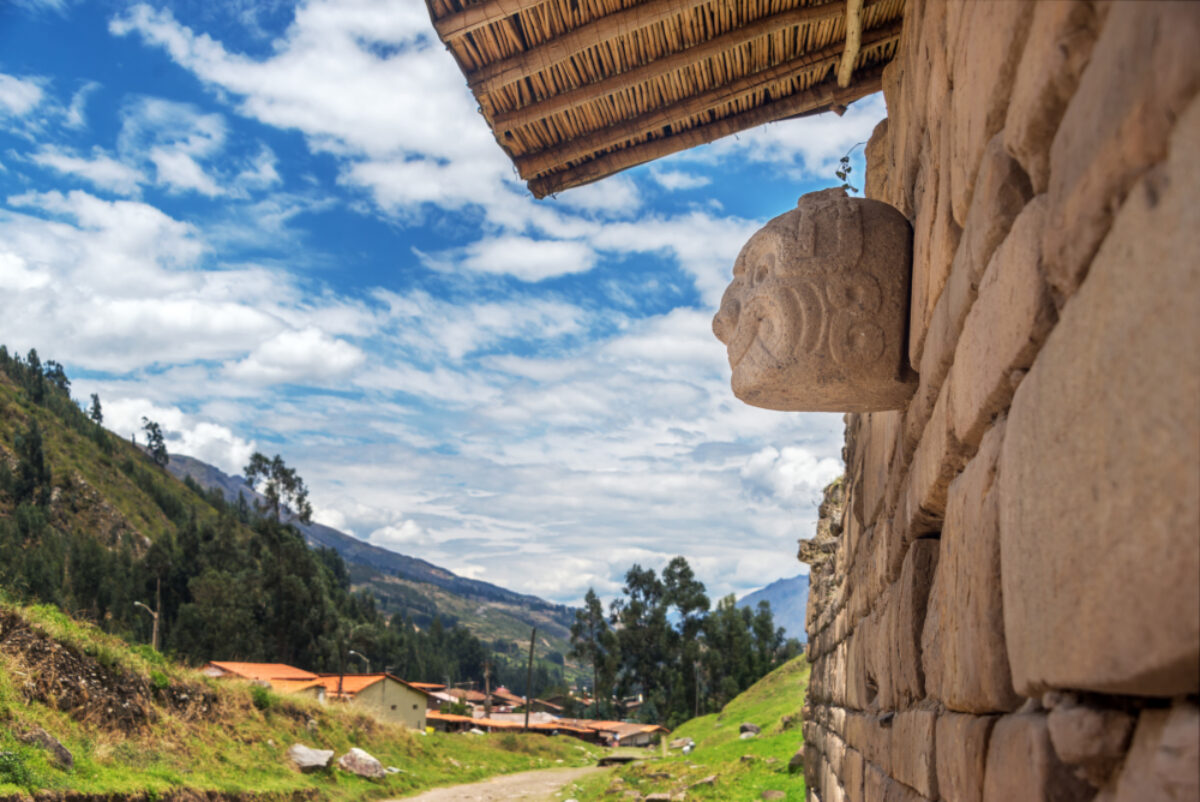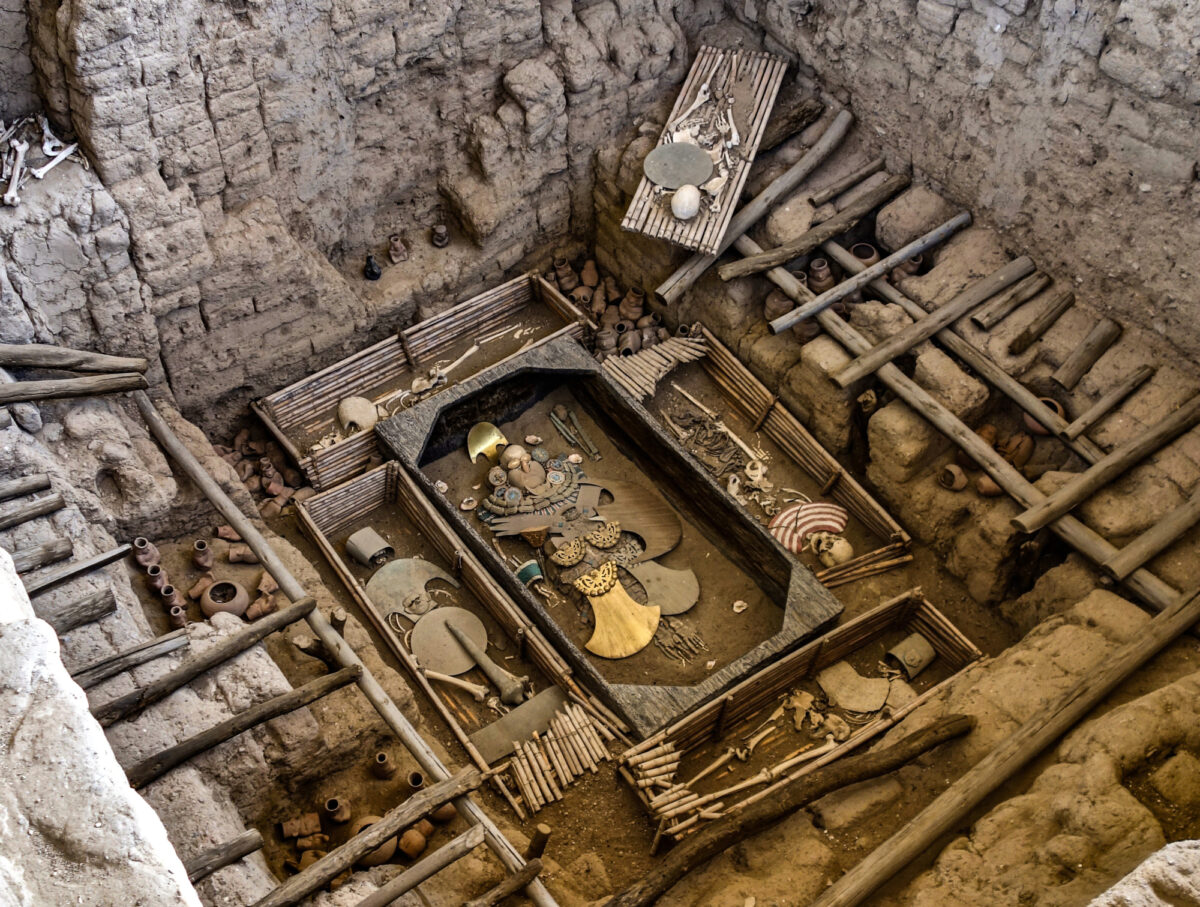Exploring Peru beyond Machu Picchu
Historic treasures await outside the Sacred Valley
I’ve spent many years travelling around the wonderful and familiar Inca sites near Machu Picchu – but I’m also very conscious of how much lies beyond the Sacred Valley and the Inca heartland around Cusco, and of how little that is often seen by visitors.
Five hundred miles to the north, for instance, lie the celebrated ruins of Chavín de Huántar. I remember when I first approached them, at dawn along a high mountain ridge latticed by the greys and greens of young eucalyptus trees and lupins. The hard early morning sun stretched the shadows low across the path as turning downhill, I started at the sudden shadow of my own boots sliding away down the slope.
Two thousand feet below were the ruins. I could see the Old Temple facing east and the dawn sun picking out the granite walls against the mountains: from this line of approach, the temple looking almost like an outlying forerunner peak of the hills beyond.

The shock of entering the principal gallery was extreme. It was lit by just a few low voltage bulbs. From small ledges in many of the interior galleries, it seemed that torches could have been lit by the priests, but the principal effect, then as now, would have been of darkness.
That was as nothing to what lay ahead – for this first and central gallery was the site of the Lanzón, the extraordinary statue carved from white granite which lay at the centre of the cruciform gallery formed by two crossed passageways. With the Lanzón, position was everything.
It was the figure of a god compressed as if into a blade – and this ‘blade figure’ dominated the narrow cruciform gallery to such an extent that it protruded up into the ceiling above. Because the walls were narrow, one was forced extremely close in order to view it, in an intriguing reversal of the usual principle by which godhead is reinforced by remoteness. The experience was like seeing a shark up close through an observation port.
The ruins of Chavín, built between 1200 BC and 200 BC, are some 2000 years older than Machu Picchu. By themselves, they would be extraordinary – but they are just one of the archaeological riches which make the rest of Peru so special as well, as a wave of discoveries and new museums have made more and more visitors realise.
I went on from Chavín to see the fabulously restored frescoes of The Pyramid of the Moon near the bustling city of Trujillo. The magnificent facades of each of the tiered layers of the pyramid have been uncovered in just the last few years, and so look as fresh as if painted recently: vivid friezes show lines of dancers and of prisoners, presided over by a demon figure with staring eyes, sometimes referred to as ‘the god with fixed eyebrows’.
Built by the Moche, best known for their imaginative and sexually explicit ceramics which museums used to have to keep in locked basements, the Pyramid of the Moon and its sister Pyramid of the Sun stand huge above the desert, time-thrashed hulks of buildings whose brown adobe walls rise up some hundred feet. They are just a few of the many pyramids lining this part of the Pacific coat – some experts estimate that Peru has more pyramids than Egypt, many of which have yet to be excavated.
And in one of those pyramids, at Sipán, a discovery occurred in 1987 that rocked the archaeological world. Walter Alva made what, after Machu Picchu, must be considered the Peruvian find of the century – not just one but three intact high-status Moche tombs, of two rulers and a high priest, wrapped in textile shrouds stained with cochineal red and with quite fabulous ornaments of turquoise and gold around them.

It was a treasure trove unparalleled since Tutankhamen: gold pectorals, turquoise statues, spondylus shells, all worked with ingenuity and skill, now on display at a magnificent museum.
The tomb that intrigued me most was the last to be discovered, right towards the bottom of the pyramid: the so-called ‘Old Lord of Sipán’ from the first century AD. He wore a giant pectoral with tentacles that, in the words of an excited Walter Alva, would have turned the wearer into ‘a human octopus’; nose pieces, bracelets and a mask made from gold, silver and turquoise. All this to enclose the skeleton of a middle-aged man five feet three inches tall.
And if that were not enough to satisfy the most avid thrill-seeker, near Trujillo lies a whole deserted city – that of Chan Chan, built by the Chimú with its spectacular adobe walls. Everyone has always known that the North of Peru contained wonders comparable to Machu Picchu and the Inca civilisation in the south; now they can be seen in their full glory.




